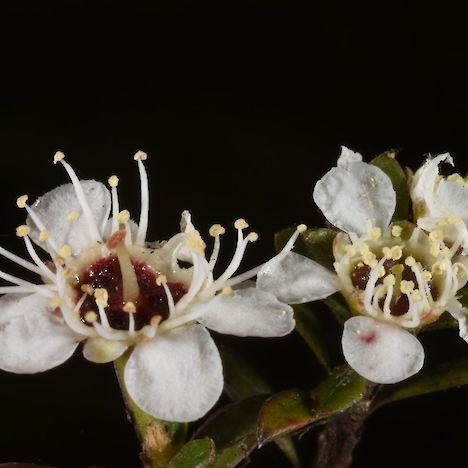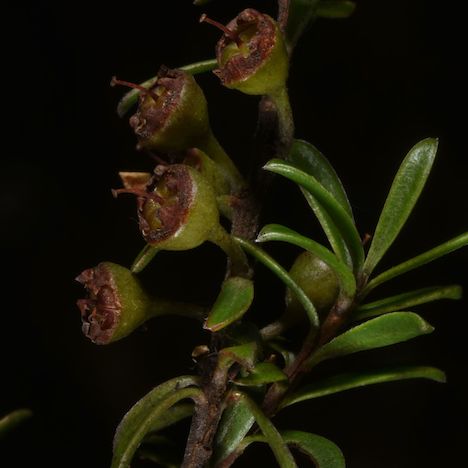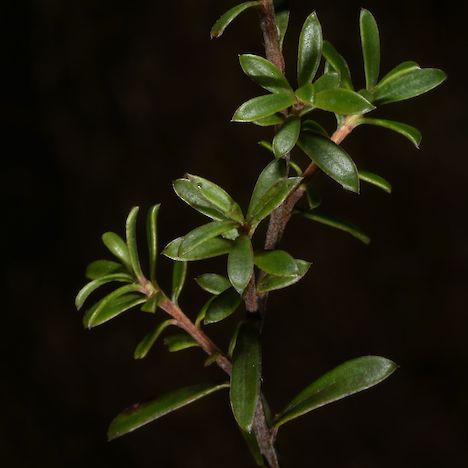Other names:
KānukaThreat category:
Threatened: Nationally Vulnerable?Regions:
Northland, Auckland, Waikato, Manawatu-Wanganui, Taranaki, Wellington, Nelson-Tasman, WestcoastDistribution:
North Island (westerly from Te Paki south to Wellington) and South Island (from Farewell Spit to West Whanganui Inlet).
Key Features
- Species of kānuka can be difficult to tell apart, especially in the field.
- Kunzea amathicola foliage is dimorphic, with ‘juveniles’ forming small flowering shrubs on active dunes and ‘adults’ dense forest on more stable dunes.
- The branches are numerous, with leaves that are dark green, glossy, obovate, and up to 25 mm long, and with hairy leaf margins and midribs (with the hairs meeting at the leaf apex rather than just short of it).
- Flowers are up to 12.5 mm diameter with white petals and a red central area, and each flower subtended by a broad leaf-like bract.
- The fruit is a dry capsule.
Distribution and Habitat
- North Island (westerly from Te Paki south to Wellington) and South Island (from Farewell Spit to West Whanganui Inlet).
- Also recorded from Kawau Island and Hauturu (Little Barrier) Island and once from the northern Hauraki Plains.
- Coastal to lowland. Mostly inhabiting mobile sand, sand dunes and sandy soils, but occasionally extending inland onto clay soils.
Threats
- Habitat modification and loss, particularly clearance for firewood.
- Few protected populations.
Management Opportunities
- Survey for new locations.
- Mark known sites.
- Protection of habitat.
- Collect seed, propagate, and reintroduce to appropriate sites.
- Ensure that forest owners are aware of potential habitats and can recognise the species.
Monitoring Options
- Check existing populations annually.
- Report new locations to DOC.
- Further Information and Support
References
- de Lange P.J (2014). A revision of the New Zealand Kunzea ericoides (Myrtaceae) complex. PhytoKeys 40: 1–185.
- New Zealand Plant Conservation Network (NZPCN). http://www.nzpcn.org.nz




